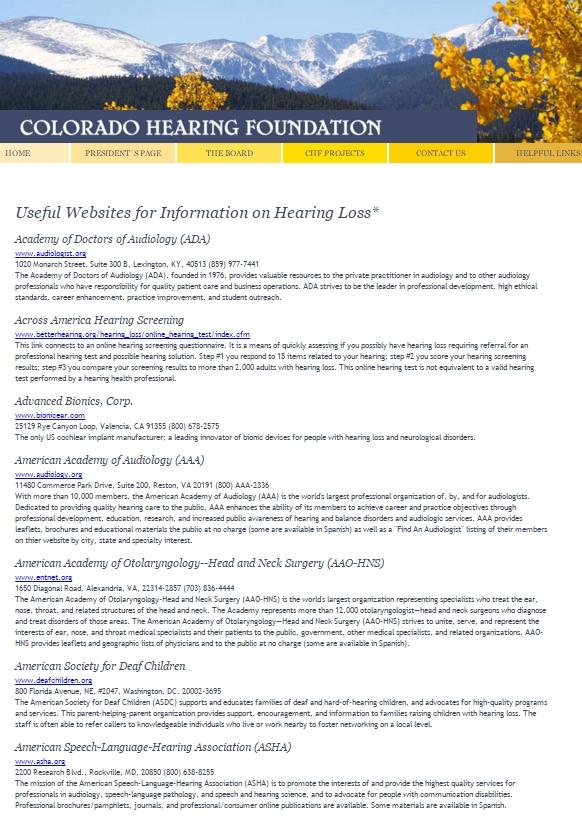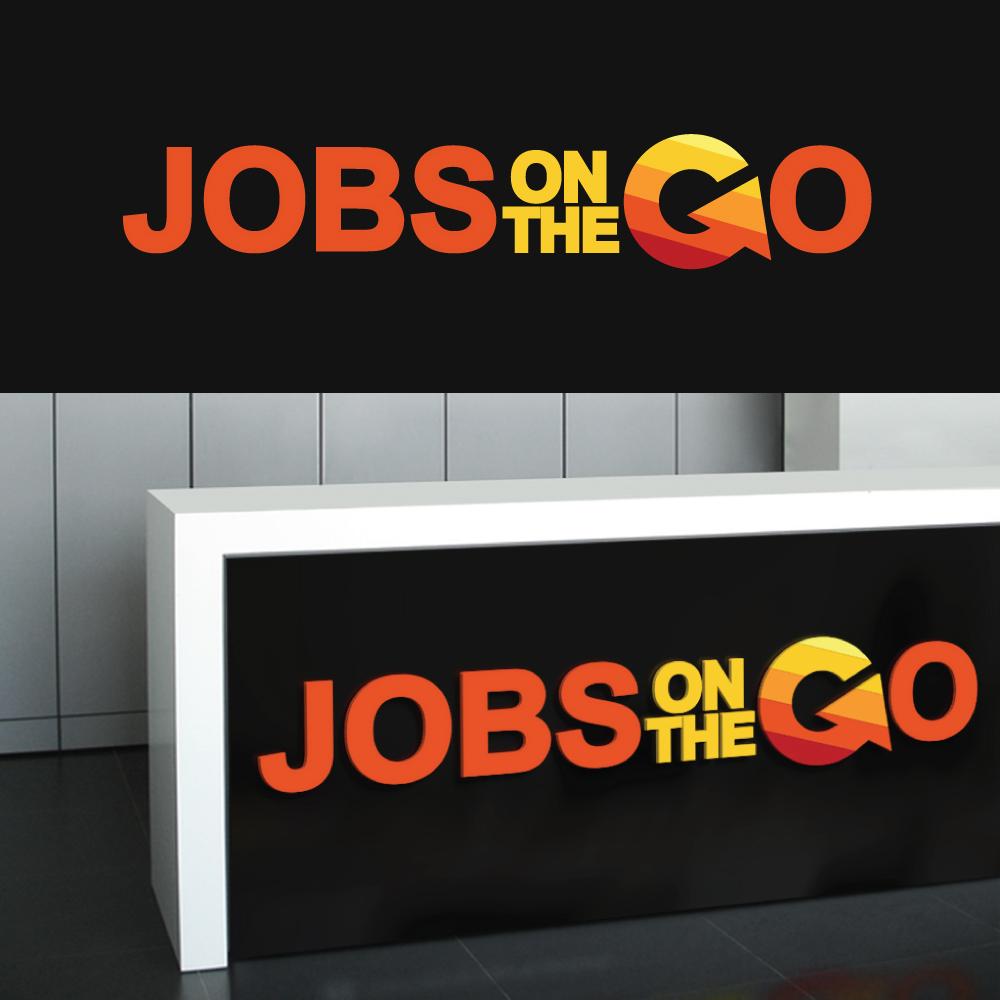
 Technical
Technical
For starters, optimizing your code makes it easier for search engines to find you. Clean codes are strong foundation for your website; everything is useless if the search engine can't even find your pages or load the website properly.
LogicGateOne Corp. a top SEO outsourcing company can standardize your coding so spiders will not get confused or ignore it and make sure your website is a browser-compatible to the big four (Firefox, Chrome, Explorer, Opera) and the others. We're also careful in rewriting URL into permalink that is readable (just to avoid different URLs pointing to the same webpage, because this could be seen as duplicate content).
Like hackers, there are black hat and white hat SEO. White hats follow legit guidelines and prioritize the benefit of the users -- no tricking the algorithm. LogicGateOne Corp. is the home of white-hat SEO strategies. . LogicGateOne can take care of things under the hood like HTML codes and site structure of the so-called quality website design, add relevant keywords on your sites metadata (could help you choose the best domain name, too). Let us help you with:
• error-free HTML code
• site architecture
• sitemap syntax
• robots meta tag
• load speed
• robots.txt syntax
• 301 redirects
• title tags
• invalid URLs
• unpaired or broken tags
• whitespace (yeah, that's an issue, too)
And whatever you do, please double check your code for typographical errors especially on titles, header, and descriptions. There's no Autocorrect for spiders.

 Generic Comments and Forum Posts
Generic Comments and Forum Posts
Post-ready comments that could pass as legit regardless of article topic? We got them. LGO could make you variations of evergreen comments that could fit any article posts.
Forum Posts
Joining discussion forums is a great way for quality link building but unless you have something really good to say, you will stand out as a spammer and will be promptly banned from the board faster than you can say "link whore". This is especially true in niche forums where the moderators are strict in accepting registrations and monitoring posts. LGO has a well-rounded team capable of writing sensible posts and natural conversations even in niche discussions so you can safely participate in the convo and leave your links in every post (via sigs).

 Why Manual Link Building Will Never Be Obsolete
Why Manual Link Building Will Never Be Obsolete
Contributor and link building expert Eric Ward discusses why manual link building will stand the test of time, despite popular predictions to the contrary.

I recently read an article titled, “SEO Practices That Will Become Obsolete By The End Of 2016” on (what is normally) a highly respected site. The author is someone I read and respect, but he made the claim that in 2016, manual link building will become obsolete. He has since edited the article and changed “Manual Link Building” to “Bulk Link Building.”
This seemingly minor edit (which I greatly welcome and appreciate) is actually at the crux of a much larger movement that seems to be permeating the SEO community. That movement is based on the belief that doing anything one at a time, or “manually,” is a waste of time, because the sheer mass of the web and link graph makes it impossible to impact it without resorting to automated or mass tactics.
Wrong. Manual link building will never be obsolete.
I agree that there are many more ways to build links today than there were when the web first caught fire. And I also agree that it is technically possible to conduct mass outreach.
The problem is that quality suffers, and I’m not just saying that as an opinion. I see it every day in my own inbox when people send me link requests that seem so perfectly crafted and personalized, yet you can tell they are not. They were sent in bulk, and worse, they are dishonest. Dishonest how? Dishonest because these outreach emails always say things like
“I was reading such and such on your site.”
or
“I noticed you are interested in online marketing and wanted to…”
Lies. All lies, and any of you reading this have probably received similar emails and thought the same thing. What a great way to begin your relationship with me — by lying to me. It’s the modern day version of spam; more sophisticated mail-merge with just enough added personalization to make me feel special.
Except I don’t, and it’s not working. We all delete them. Bragging about a 2.5 percent success rate is laughable.
People Still Need People
Certain aspects of the link-building process have already proven to be pointless and obsolete. But one thing that will never change is human desire to connect with other humans, to share, cultivate, curate and collect useful, valuable and helpful pages, apps, or whatever the digital content is, with each other. If that wasn’t the case, there would be no Twitter, which is tailor-made for link sharing.
Real-Life Example: I conducted an outreach project for a large international hearing aid manufacturer. This is a subject that I care about deeply because my 13-year-old is deaf. The client’s goal was to bring attention to their newly relaunched site and content areas — and yes, their hearing aids, and yes, they make money on them. (I get it.)
One of my recommended strategies was to identify hearing/audiology sites, associations, foundations and others that provided curated outbound hearing loss resources/links. Obviously, one of our hoped-for outcomes was links.
See the image below? That page is from the Colorado Hearing Foundation. The specific page is titled, “Useful Websites for Information on Hearing Loss.” And here’s the truth that “manual link building is dead” believers are completely missing: Getting a link on that page is not something that can be automated.

I did the research to identify the absolutely most appropriate websites. More importantly, I had to spend extra time to read the “About Us” or “Our Staff” pages so I could find the person/people who make the decisions about what resources are and are not included on those pages. Sometimes that’s not easy, even when doing it manually. Sometimes you might even have to pick up the phone. That’s right, THE PHONE. Don’t pass out.
And the page above did, in fact, link to my client’s site.
Automation will never find the perfect sites. Automation will never find the exact contact that makes the final decisions as to who to link out to. Automation will never fool anyone into thinking the email you are sending them is just for them.
Sure, automation and scrapers can find plenty of email address, like webmaster@, help@, info@, questions@, inquires@, etc. But emails to those addresses are not being received by the decision-makers. Those email addresses are spam holes.
I did the research to identify the absolute most appropriate websites and more importantly, I spent the extra time to find the person/people who make the decisions about what resources are and are not included on those pages.
I often will even make a phone call to the organization to introduce myself and ask for the appropriate contact name. What a shock: actually talking to a human.
And here’s the kicker: When I am able to find the right person and website, and I conduct outreach as I just described, my success rate is close to 100 percent. That won’t happen with bulk outreach. In my case, I’m only contacting a small set of heavily vetted sites that have perfect-match resource lists for the content/site I’m introducing them to. That’s when success can happen.
But the larger point is, why shouldn’t 100 percent success happen? If you’re representing a truly outstanding piece of content, and you’ve taken the time to reach a the exact person who has already demonstrated they are curating content and links in that subject area, a link is the logical, natural outcome of that process.
The End Game Has Not Changed
This is why I laugh when I hear people say that 2.5 percent success rate on email outreach is considered acceptable. What a joke. Automating outreach is just reckless, and frankly, sad.
The internet is always going to be about people connecting with other people, or connecting with content written by people (sorry, Narrative Science). And while I agree there are many link-building strategies, tactics and techniques that need to die a slow and painful death, the process of one person sharing with another person an incredibly useful piece of content that will resonate with that person and result in a link will never go out of style and will never be obsolete.
I’ve been doing this for 20 years. I can assure you that while the methods for identifying the right people have become more challenging, at the end of the day, the end game is still the same: I need to get in touch with the person who will most likely care about what it is I’m sharing or seeking links for.
That cannot be automated, cannot be replicated, cannot be syndicated. It takes a person willing to roll up their sleeves, with the saavy to identify and connect with the appropriate person who will care about what they have to tell them.
Thank you for allowing me a few minutes of your day.
Some opinions expressed in this article may be those of a guest author and not necessarily Search Engine Land. Staff authors are listed here.

 Making SEO and Social Media Marketing Work for You
Making SEO and Social Media Marketing Work for You
Here is short history of business technology:
- In the late 1980s you had to have a fax machine (and fax number on your business card) in order to be seen as a credible business
- In the late 1990s, no legitimate company would be caught dead without a website (in fact, any company without a website was probably dying as a result)
- In the late 2000s (and more so every day), any business without a proactive plan to manage social media was falling behind its competition
- In the 2010s, if you still have a fax machine (and fax number on your business card), you may be in more trouble than you thought
Increasing your web presence and social media footprint has never been more urgent. Whether you are only launching a business or striving to make an existing one more accessible and appealing to customers, now is the time to dump the fax machine, jump on SEO, and avoid extinction.
With respect to a viable web presence, where would you plot your company on this adoption curve? The latest adopters in this familiar model have traditionally been labeled “Laggards,” but in the world of SEO and social media, latecomers are plain old Dinosaurs because of the extinction-level event that is created by their inattention.

 How to Use Hosted Blog Platforms for SEO & Content Distribution
How to Use Hosted Blog Platforms for SEO & Content Distribution
Where do you host your content? Is it on your own site, or on third-party platforms like Medium and LinkedIn? If you're not yet thinking about the ramifications of using hosted blog platforms for your content versus your own site, now's your chance to start. In this week's Whiteboard Friday, Rand explores the boons and pitfalls of using outside websites to distribute and share your content.
Video Transcription
Howdy, Moz fans, and welcome to another edition of Whiteboard Friday. This week we're going to chat a little bit about blog platforms, places like Medium, Svbtle - that's Svbtle with a V instead of a U - Tumblr, LinkedIn, places where essentially you've got a hosted blog platform, a hosted content platform. It's someone else's network. You don't have to set up your own website, but at the same time you are contributing content to their site.

This has become really popular, I think. Look, Medium and LinkedIn are really the two big ones where a lot of folks are contributing these days. LinkedIn very B2B focused, Medium very startup, and new media as well as new creative-focused.
So I think, because of the rise of these things, we're seeing a lot of people ask themselves, "Should I create my own content platform? Do I need to build a WordPress hosted subfolder on my website? Or can I just use Medium because it has all these advantages, right?" Well, let me try and answer those questions for you today.
So, what do hosted platforms enable?
Well, it's really simple to sign up and start creating on them. You plug in your name, email, a password. You don't have to set up DNS. You don't have to set up hosting. You can start publishing right away. That's really easy and convenient.
It also means that, for a lot of marketers, they don't have to involve their engineering or their web development teams. That's pretty awesome, too.
There are also built in networks on a lot of these places, Medium in particular, but Svbtle as well. Tumblr quite obviously has a very, very big network. So as a result, you've got this ability to gain followers or subscribers to your content, someone that can say like, "Oh, I want to follow @randfish on Medium." I haven't published on Medium, but for some reason I seem to have thousands of followers there.
So I think this creates this idea like, "Hey, I could reach a lot more people that I wouldn't necessarily be able to reach on my own platform, because it's not like these people are all subscribed to my blog already, but they are signed up for Medium or LinkedIn, which has hundreds of millions of worldwide users."
There's also an SEO benefit here. You inherit domain authority. On Medium and on LinkedIn in particular, these can be really powerful. Medium is a domain authority 80. LinkedIn is a domain authority of 99, which is no surprise. Pretty much every website on the planet links to their LinkedIn page. So you can imagine that these pages have the potential to do really well in Google's rankings, and you don't necessarily have to point a lot of links at them in order for them to rank very well. We've seen this. Medium has been doing quite well in the rankings. LinkedIn articles are doing quite well in their niches.
This is a little different, a subtle but important difference for Svbtle itself, for Tumblr, and for WordPress. These are on subdomains. So it would be, yes, there are lots of people who are using WordPress, although that's very customizable. But you could imagine that if I got randstshirts.wordpress.com or randstshirts.tumblr.com or randstshirt.svbtle.com, that doesn't have the same ranking ability. That subdomain means that Google considers it separately from the main domain. So you're not going to inherit the ranking benefit on those. It's really Medium and LinkedIn where that happens. To be honest, Google+ as well, we've seen them ranking like a Medium or a LinkedIn too.
You also have this benefit of email digests and subscriptions, which can help grow your content's reach. For those of you who aren't subscribed to Medium, they send out a daily digest to all of the folks who are signed up. So if you are someone who is contributing Medium content, you can often expect that your subscribers through Medium may be getting your stuff through an email digest. It may even get broadcast to a much broader group, to people who aren't following you but are following them. If they've "hearted" your content on Medium, they'll see it. So you get all these network effects through email digests and email subscriptions too.
So what's the downside?
This is pretty awesome. To me, these are compelling reasons to potentially consider using these. But before we get too far ahead of ourselves, let's talk about the downside as well. To my mind, these downsides prevent me from wanting to encourage certain types of views. I'll talk about my best advice and my tactical advice for using these in a sec.
Links authority and ranking signals that are accrued. We recognize that you put a post on Medium, a lot of times posts there do very well. They get a lot of traction, a lot of attention. They make it into news feeds. Other sites link to them. Other pages around the web link to them. It's great. Lots of social shares, lots of engagement. That is terrific.
Guess what? Those benefits accrue only to Medium.com. So every time you publish something there and it gets lots of links and ranking signals and engagement and social and all these wonderful things, that helps Medium.com rank better in the future. It doesn't help yoursite.com rank better in the future.
You might say, "But Rand, I've got a link here, and that link points right back to my site." Yes, wonderful. You now have the equivalent of one link from Medium. Good for you. It's not a bad thing. But this is nowhere near the kind of help that you would get if this piece of content had been hosted on your site to begin with. If this is hosted over here, all these links point in there, and all those ranking benefits accrue to your site and page.
In some ways, from an SEO perspective, especially if you're trying to build up that SEO flywheel of growing domain authority and growing links and being able to rank for more competitive stuff, if you're trying to build that flywheel, you'd almost say, "Hey, you know what, I'd take half the links and ranking signals if it were on my own site. That would still be worth more to me than more on Medium."
Okay. But that being said, there are all the distribution advantages, so maybe we're still at a wash here.
Also on these blogging platforms, these hosted platforms, there's no ownership of or ability to influence the UI and UX. That is a tough one too. So one of the wonderful things about blogging is - and we've seen this over the years many times at Moz. People come to Moz to read the content, they remember Moz, and they have a positive association and they say, "Yeah, you know, Moz made me feel like they were authorities, like they knew what they were talking about. So now I want to go check out Moz Local, their product, or Moz Analytics, or Open Site Explorer, or whatever it is."
That's great. But if you are on Medium or if you are on Svbtle or if you are on WordPress - well, WordPress is more customizable - but if you're on Google+, the experience is, "Oh, I had a really good experience with Medium." That's very, very different. They will not remember who you are and how you made them feel, at least certainly not to the extent that they would if you owned and controlled that UI and UX.
So you're really reducing brandability and any messaging opportunities that you might have had there. That's dramatically, dramatically reduced. I think that's very, very tough for a lot of folks.
Next up - and this speaks to the UI and UX elements - but it's impossible to add or to customize calls to action, which really inhibits using your blog as part of your funnel. Essentially, I can't say, "Hey, you know what I'd like to do? I'd like to add a button right below here, below all my blog posts that says, 'Hey, sign up to try our product for free,' or, 'Get on our new mailing list,' or, 'Subscribe to this particular piece of content.' Or I want to put something in the sidebar, or I'd like to have it in the header. Or I want to have it as a drop over when someone scrolls halfway down the page." You can't do any of those things. That sort of messaging is controlled by the platform. You're not allowed to add custom code here, and thus your ability to impact your funnel with your blog or with your content platform on these sites is severely limited. You can add a link, and yes, people can still follow you on these networks, but that is definitely not the same.
There's also, frustratingly, for a lot of paid marketers and a lot of marketers who know that they can do this, you can't put a retargeting pixel on Svbtle or on Medium. Actually, you may be able to on Svbtle now. I'm not sure if you can. But Medium for sure, LinkedIn for sure, Google+, you can't say, "Hey, all the people who come to my posts on Medium, I'd like to retarget them and remarket to them as they go around the web later, and I'll follow them around the Internet like a lost puppy dog." Well, too bad, not possible. You can't place that pixel. No custom code, that's out.
The last thing, and I think one of the most salient points, is there have been many, many platforms like this over the years. Many people use the example of GeoCities where a lot of people hosted their content and then it went away. In the early days of the web, it was very big, and a few years ago it fell apart.
It's not just that, though. The uncertain future could mean that in some time frame, in the months or years to come, Medium, or Svbtle, or LinkedIn, or Google+ could become more like Facebook, where instead of 100% of the people seeing the content that they subscribe to, maybe they only see 10% or the Facebook averages today, which are under 1%. So this means that you don't really know what might happen to your content in the future in terms of its potential visibility to the audience there. If that's the sole place you're building up your audience, that is a high amount of risk depending on what happens as the platform evolves.
This is true for all social platforms. It's not just true for these hosted blog content platforms. Many folks have talked about how Twitter in the future may not show 100% of the content there. I don't know how real that is or whether it's just a rumor, but it's one of those things to consider and keep in mind.
My best advice:
So my best advice here is, use platforms like these for reaching their audiences. I think it can be great to say, "Hey, 1 out of every 10 or 20 posts I want to put something up on Medium, or I want to test it on Google+, or I want to test it on LinkedIn because I think that those audiences have a lot of affinity with what I'm doing. I want to be able to reach out to them. I want to see how those perform. Maybe I want to contribute there once a month or once a quarter." Great. Wonderful. That can be a fine way to draw distribution there.
I think it's great for building connections. If you know that there are people on those networks who have big, powerful followings and they're very engaged there, I think using those networks like you would use a Twitter or a Facebook or like you already use LinkedIn to try and build up those connections makes total sense.
Amplifying the reach of existing content or messages. If you have a great piece of content or a really exciting message, something exciting you want to share and you've already put some content around that on your own site and now you're trying to find other channels to amplify, well, you might want to think about treating Medium just like you would treat a post on Twitter or a post on Facebook or a post on LinkedIn. You could instead create a whole piece of content around that, sort of like you would with a guest post, and use it to amplify that reach.
I think guest post-style contribution, in general, is a great way to think about these networks. So you might imagine saying, "Hey, I'd love to contribute to YouMoz," which is Moz's own guest blogging platform. That could be wonderful, but you would never make that your home. You wouldn't host all your content there. Likewise you might contribute to Forbes or Business Insider or to The Next Web or any of these sites. But you wouldn't say that's where all my content is going to be placed. It's one chance to get in front of that audience.
Last one, I think it's great to try and use these for SERP domination. So if you say, "Hey, I own one or two of the top listings of the first page of results in Google for this particular keyword, term, or phrase. I want to use Medium and LinkedIn, and I'm going to write two separate pieces targeting similar keywords or those same keywords and see if I can't own 4 slots or 5 slots out of the top 10." That's a great use of these types of platforms, just like it is with guest posting.
Don't try to use these for...
Don't try to use these as your content's primary or, God forbid, only home on the web. Like I said, uncertain future, inability to target, inability of using the funnel, just too many limitations for what I think modern marketers need to do.
I don't think it is wise, either, to put content on there that's what I'd call your money keywords, essentially stuff that is very close to the conversion funnel, where you know people are going to search for these things, and then when they find this content, they're very likely to make their next step a sign-up, a conversion. I would urge you to keep that on your site, because you can't own the experience. I think it's much wiser if you say, "Hey, let's look way up in the funnel when people are just getting associated with us, or when we're trying to bring in press and PR, or we're trying to bring in broad awareness." I think those are better uses.
I think it's also very unwise to make these types of platforms the home of your big content pieces, big content pieces meaning like unique research or giant visuals or interactive content. You probably won't even be able to host interactive content at most of these.
If you have content that you know is very likely to drive known, high-quality links, you've already got your outreach list, you're pretty sure that those people are going to link to you, please put that content on your own site because you'll get the maximum ranking benefits in that fashion. Then you could potentially put another piece of content, repurpose a little bit of the information or whatever it is that you've put together that's wonderful in terms of big content as another piece that you separately broadcast and amplify to these audiences.
What I'm really saying is treat these guys - Medium, Svbtle, LinkedIn, Tumblr, and Google+ - treat them like these guys, like you use Facebook, Twitter, Instagram, YouTube, and guest hosts in general. It's a place to put a little bit of content to reach a new audience. It's a way to amplify a message you already have. It's not the home of content. I think that's really what I urge for modern marketers today.
All right, everyone. Look forward to the comments, and we'll see you again next week for another edition of Whiteboard Friday. Take care.

 App Ads and Social Media
App Ads and Social Media
Unlike the classic banner ads which started during the dawn of the Internet age, app install advertisements are seen as more effective when it comes to mobile ad because:
- Apps are easier to buy. Almost all smartphone users have their credit card linked to their OS' app store so there's no need to input anything every time they feel like buying. With the wide range of apps, there's a big chance a user can find several that appeals to him or her. And since apps are priced cheaply and can be used instantly, many users are tempted to buy on impulse.
- Tracking installs is convenient. Compared to conversions of mobile adverts promoting stuff meant to be bought offline, conversions for install ads in apps are way easier to measure. This is a huge advantage because advertisers would naturally want to at least see some evidence of ROI on their advertisements in order to continue. Typically advertisements' conversions will be difficult to keep track of since there's no way to know if one of those led to someone buying the product from the grocery. With app install ads though, there are the social media sites and SDKs that can accurately measure when one of their ads led directly to an install.
Google realized the importance of advertising on mobile devices early on. In 2009, it purchased the ad giant AdMob for USD 750 million. A year after, Apple has followed suit with its acquisition of Quattro Wireless that they relaunched as iAd. Unfortunately for Facebook, it did not see the huge shift from desktop to mobile earlier so they only made efforts on mobile advertising in 2012.
But since selling ads alone would be inadequate -- after all, in order for users to download the app, developers have to make it known to the public first -- Twitter and Facebook created a strategy on app ads as they both do not have OS like Google and Apple. Their aim is simple: to offer quality tools and services for developers to start a connection that could eventually lead to buying ads. Now, Twitter has its MoPub, which tracks all apps on a phone in order to effectively target ads, while Facebook has its Parse.
As for Google, it seemed like it grew complacent with gaining the AdMob platform, which is a bit understandable as it has no need to rush like Twitter and Fb -- all they need is to improve their ad conversion. And sure enough, earlier this year, Google has launched improved app install ads that effectively utilizes its data trove concerning apps that people buy, use and download for free. It could eventually join Twitter and FB in providing app engagement ads based on various data it can collect from users.
With the inevitable overcrowding in app stores, app install ads would surely be more significant and evolve into new forms such as engagement ads. A good example of this is Facebook's video ad from LiveRail which shows how useful or fun an app is. Another one is the launcher app of Android that shows contextual home screens and customized recommendations of apps a user may need.
About Us
At Logicgateone Corp., everything we do is customized to every client we work, which requires thorough consultation to ensure that we are on the same page and we understand your expected results. We usually advise clients to sign up for this complete SEO package but if you really need help on certain avenues of SEO, we have detailed each of them for you.
We are a full service SEO Company that specializes in organic Google Search Engine Optimization Services based in Subic Bay, Philippines. If you would like to see your company website ranked on page 1 of Google then you should contact us for a free SEO quote.
Customer support service by UserEcho





